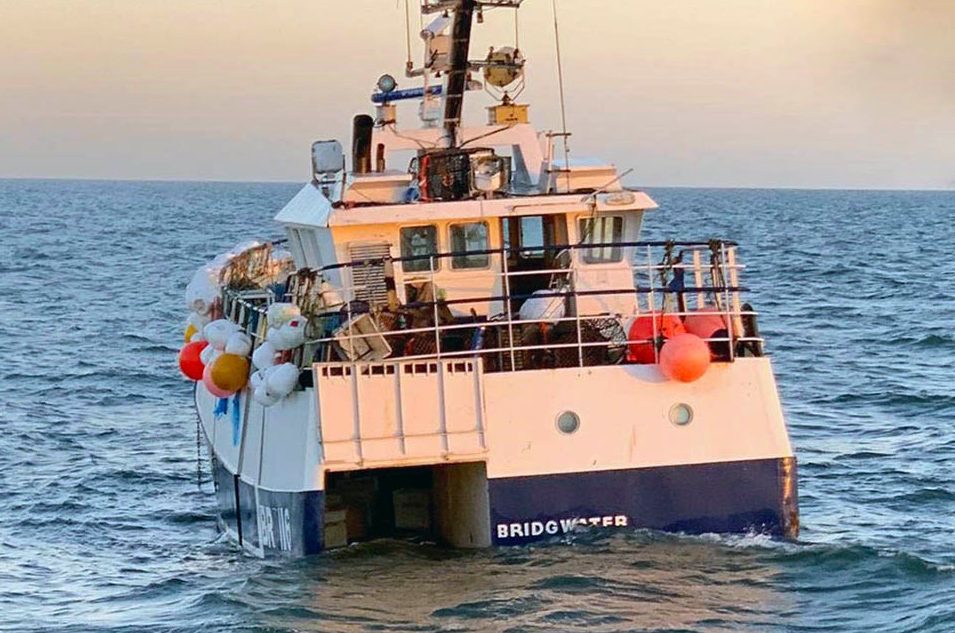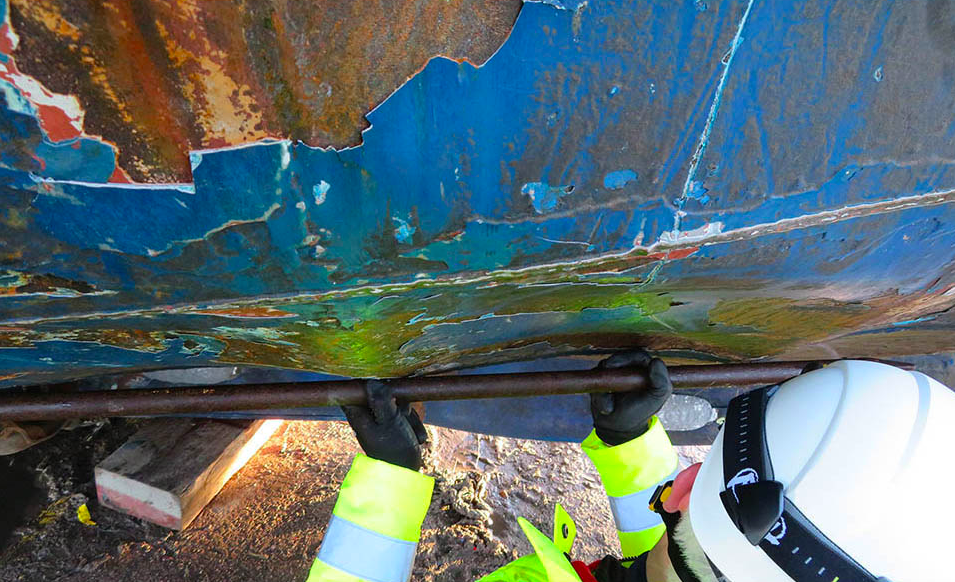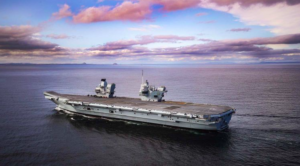Fishing boat explosion likely caused by old munitions

Seven crew of a fishing boat had to board a life raft after they were hit by the ‘nightmare scenario’ of being lost at sea and taking on water earlier the month. This is after an explosion onboard which tore the wheel house apart.
RNLI Cromer’s all-weather Tamar class lifeboat was launched at 15 December, after reports of the boat in trouble. Three of the casualties were airlifted to Hull by rescue helicopter while the remaining four crew members were transferred into the lifeboat and brought back to shore where they were treated by paramedics before being transferred to the Norfolk and Norwich University Hospital.
Now the Marine Accident Investigation Branch (MAIB) has issued its preliminary assessment – and it says that the explosion was possibly caused by old munitions on the seabed being disturbed as Galwad-Y-Mor hauled its pots.
‘The explosion was in the water and external to the vessel,’ says MAIB’s assessment. ‘There was nothing that the crew could have done to prevent the accident. The source of the explosion has not been determined, but it was possible that old munitions on the seabed were disturbed as the vessel hauled its pots. Although extensively damaged and flooded, it is almost certain that Galwad-Y-Mor stayed afloat because the bulkheads either side of the engine room maintained their watertight integrity, containing the flood’.

On the day in question Galwad-Y-Mor was operating in potting fishing grounds east of the Wash. The crew was in the process of hauling in a string of crab pots; the skipper was in the wheelhouse with other crew members below decks. The hauler was being used to heave in the back rope, and the crew had let the skipper know that there was a lot of tension on the line, when there was an unexpected explosion.
Galwad-Y-Mor was thrown up from the sea surface, then landed heavily back down, all propulsion and electrical power was immediately lost. The skipper was injured and dazed, but conscious, and saw that the wheelhouse had been completely wrecked. As he became aware that other crew members had been badly injured and that the engine room was flooding, the skipper ordered the crew to abandon ship. He also raised the alarm by texting the skipper of a sister vessel and activating the electronic position indicating radio beacon.
Although the liferaft had been manually activated, all crew members were initially rescued by the offshore support vessel, Esvagt Njord, then transferred ashore to hospital by helicopter and lifeboat. The abandoned Galwad-Y-Mor, which had settled low in the water, was towed to Grimsby then lifted out of the water.
All crew members suffered injuries, some life-changing, during the explosion.
MAIB lists the key areas of damage as extensive shell plating indentation between frames, shell plating ruptures and shearing of a seawater suction, main engine displaced from bedplate, widespread and significant levels of destruction of the wheelhouse and other internal compartments, buckling of internal bulkheads and warping of decks and widespread damage to upper deck fittings.
MAIB’s investigation is ongoing.










